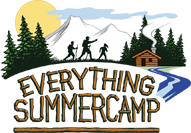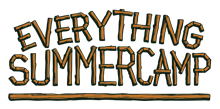Hey, Soon-to-be-Summer Campers!
The approaching summer camp season is an exciting time for everyone. Parents, kids…doctors. Wait, doctors? Well, sure—didn’t you know that today is National Doctor Day? Doctors play a vital role in people’s lives—especially those in serious need of medical attention and care. But their important in less serious ways as well.
After all, not every doctor visit is vital to your survival (hopefully few have been!); Your doctor visits should mostly consist of quick, painless checkups along with the occasional trip when you’re sick and in need of antibiotics or other medicine. A physical examination is another easy visit to the doctor that you’ll have to make at some time or another.
Just as most schools and sports teams do, summer camps insist that children undergo a physical examination before you can sign up for their programs. A sports physical is a visit to the doctor in which the doctor makes sure you’re in good enough shape in order to participate in the intense physical activities of the summer camp lifestyle.
Odds are, you’ve got to get a physical before starting summer camp. Take today—National Doctor Day—and use it as your family’s reminder to get your soon-to-be-summer campers their physical.
If your child has already had an annual checkup, then you can probably cross this part of summer camp preparation off your list, however, you may want to contact the camp to make sure that your kid’s most recent visit meets their requirements.
But whether doctors are performing a physical exam or saving a life, the job they do is always important to the patient. Make your appointment today to get your kid in for a physical and make sure to wish your doctor a happy Doctor Day. As always, thanks for reading.
Read more about physical preparation from Dr. Thurber in this Blog post from our archives.
- John







 As for our Womens Smartwool Socks, you can find three superb options. Each of these pairs of socks sports a fancy or subtle, feminine pattern and boast an unprecedented durability with a technology developed by Smartwool called Reliawool™.
As for our Womens Smartwool Socks, you can find three superb options. Each of these pairs of socks sports a fancy or subtle, feminine pattern and boast an unprecedented durability with a technology developed by Smartwool called Reliawool™.